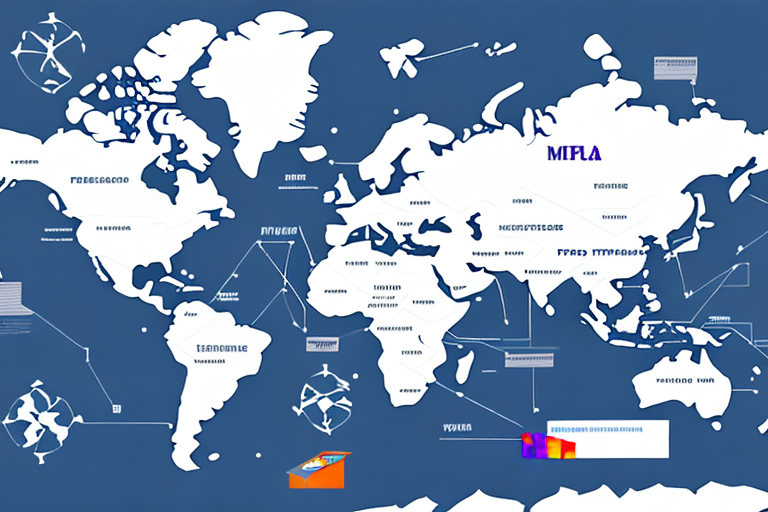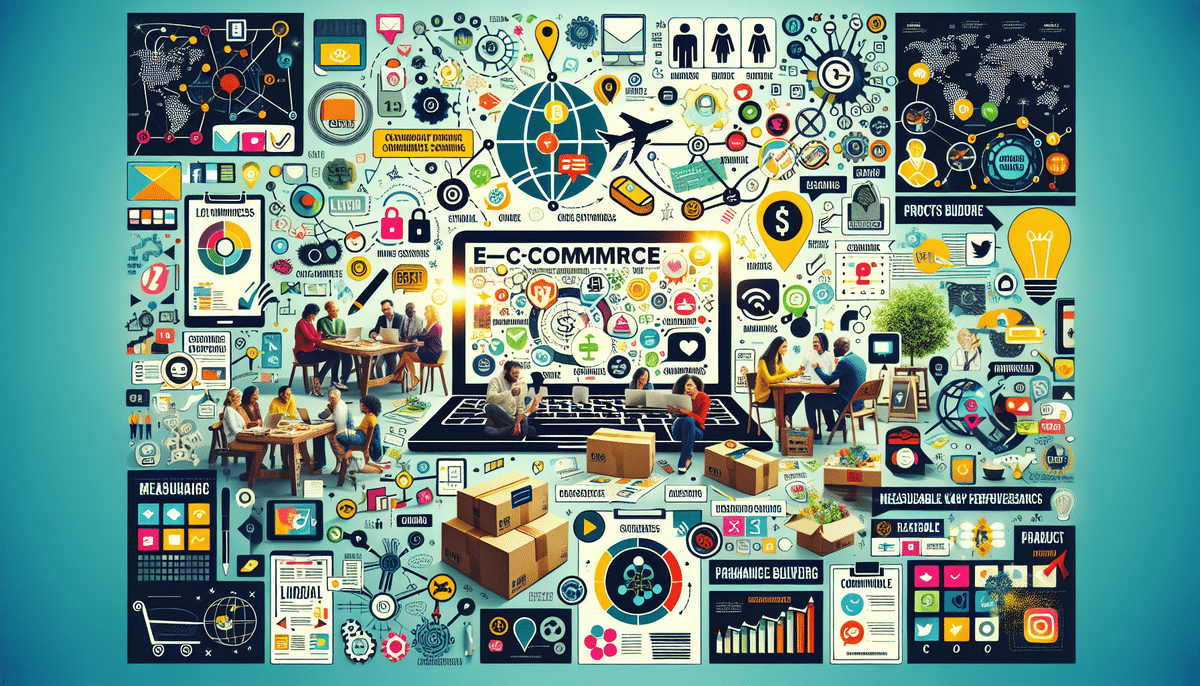The Power of Experiential Marketing: How to Engage Your Audience and Boost Your Brand
In today's fast-paced and highly competitive business world, building strong relationships with customers has become more important than ever. Traditional advertising techniques are no longer sufficient to capture the attention of consumers. Brands must go above and beyond to create unique experiences that truly connect with their target audience. This is where experiential marketing comes into play. In this article, we will explore the concept of experiential marketing and its importance, how to understand your target audience, develop a compelling brand story, create interactive experiences, leverage social media to amplify your campaigns, measure success, overcome challenges, and budget for campaigns. We will also examine top examples of successful experiential marketing campaigns from leading brands and future trends in this field.
What is Experiential Marketing and Why is it Important?
Experiential marketing is a strategy that focuses on creating engaging and memorable experiences for consumers. It involves crafting real-life interactive experiences that allow customers to interact with a brand directly. This can include events, activations, installations, or other immersive experiences. The primary goal of experiential marketing is to strengthen the emotional connection between the brand and its target audience by creating a positive and lasting impression. Unlike traditional advertising, which is often passive and one-way, experiential marketing fosters two-way interactions, enabling brands to build stronger relationships with their customers through memorable experiences.
In the digital age, where consumers are bombarded with advertisements and marketing messages daily, experiential marketing has become increasingly vital. According to a 2023 Experiential Marketing Report, brands that invest in experiential marketing see a 30% increase in customer engagement compared to those that rely solely on traditional advertising. By creating unique and memorable experiences, brands can cut through the noise and capture the attention of their target audience. Additionally, experiential marketing allows brands to showcase their products or services in a tangible way, giving customers the opportunity to see, touch, and experience them firsthand. This is particularly effective for products that are difficult to explain or demonstrate through traditional advertising methods. Overall, experiential marketing is a powerful tool for building brand awareness, driving customer engagement, and ultimately increasing sales.
Understanding Your Target Audience: A Key Component of Experiential Marketing
Before creating an experiential marketing campaign, it is crucial to understand your target audience. This involves getting to know their needs, wants, interests, and values. By understanding your target audience, you can tailor the experience to their preferences, making it more effective and memorable. One way to gather information about your target audience is by conducting surveys or focus groups. This can help you better understand their preferences and interests. Alternatively, you can analyze existing data or social media trends to identify your target audience's behaviors and interactions.
Another important aspect of understanding your target audience is considering their demographics, such as age, gender, income, and education level. This information can help you create a more targeted and personalized experience that resonates with your audience. For example, if your target audience is primarily young adults, incorporating technology and social media into your experiential marketing campaign may be more effective. On the other hand, if your target audience consists of older adults, focusing on creating a more traditional and nostalgic experience might yield better results.
Developing a Compelling Brand Story: The Foundation of Experiential Marketing
A strong brand story is essential for successful experiential marketing campaigns. Your brand story should communicate your values, mission, and unique selling proposition in a way that resonates with your target audience. A compelling brand story can help customers identify with your brand and build a more emotional connection. When creating your brand story, consider your brand's history, unique features, and value propositions. Use storytelling techniques to create an engaging and memorable narrative that captures your target audience's attention.
Consistency is key when developing your brand story. Ensure that your brand story is reflected across all marketing channels, including your website, social media, advertising, and any other communication channels you use. This consistency helps reinforce your brand's message and build trust with your audience. Additionally, regularly revisiting and refining your brand story can help keep it fresh and relevant, ensuring that it continues to resonate with your target audience over time.
Creating Interactive and Memorable Experiences to Engage Your Audience
To create successful experiential marketing campaigns, focus on crafting interactive and memorable experiences that connect with your target audience. This can involve a variety of strategies, such as branded installations, pop-up events, or interactive social media campaigns. The key is to design an experience that is unique and relevant to your brand while also providing value to your target audience. The experience should be immersive, multi-sensory, and engaging, with a clear message that communicates your brand's story and values.
One effective way to create an immersive experience is by incorporating technology, such as virtual reality (VR) or augmented reality (AR). According to a study by ShipScience, 65% of consumers find VR and AR experiences more engaging than traditional media. These technologies can transport your audience to different worlds and allow them to interact with your brand in new and exciting ways. Another strategy is to partner with influencers or other brands to create a collaborative experience that appeals to a broader audience.
Remember that the experience doesn't end when the event is over. Follow-up communication and engagement with your audience can help solidify the connection they made with your brand during the experience. This can include social media engagement, personalized emails, or even a follow-up event or promotion.
Leveraging Social Media to Amplify Your Experiential Marketing Campaigns
Social media can be a powerful tool for amplifying your experiential marketing campaigns. By utilizing social media channels, you can engage with your target audience and create a buzz around your campaigns. Consider using branded hashtags, live streams, or user-generated content to encourage social media engagement. You can also promote your experiential marketing campaigns before, during, and after the event to keep the conversation going.
Partnering with social media influencers is another effective strategy. Influencers have large followings and can help promote your campaign to their audience. Collaborate with influencers by providing them with exclusive access to your event or product, or by offering them a discount code to share with their followers. This can help increase your reach and generate more buzz around your campaign.
Measuring the Success of Your Experiential Marketing Campaigns: Metrics That Matter
Measuring the success of your experiential marketing campaigns is essential to ensure that your investment is yielding results. Key metrics to consider include overall attendance, engagement levels, social media mentions, repeat attendance, and brand awareness. Tools such as event tracking software, social media analytics, and surveys can help you track these metrics. By analyzing this data, you can understand what worked well and what areas need improvement, allowing you to refine your strategy for future campaigns.
Another important metric is the return on investment (ROI) of your experiential marketing campaign. This involves calculating the revenue generated from the campaign compared to the cost of executing it. Determining the ROI helps you assess whether the campaign was profitable and worth the investment. Additionally, this information can guide future campaign decisions and resource allocation.
Top Examples of Successful Experiential Marketing Campaigns from Leading Brands
As experiential marketing gains popularity, many leading brands are creating innovative and memorable campaigns. Here are some standout examples:
- Coca-Cola's "Share a Coke": This campaign allowed customers to personalize bottles with their names, fostering a personal connection with the brand.
- Nike's "The Human Race" Event: A global 10K run across major cities that engaged communities and promoted fitness.
- Red Bull's "Stratos" Project: A record-breaking skydive from the stratosphere that captured global attention and showcased the brand's adventurous spirit.
- Lego Build Together: Pop-up stores in various cities where families could build Lego sets together, promoting creativity and family bonding.
- Heineken Experience: An interactive brewery tour in Amsterdam, allowing visitors to see the brewing process and participate in beer tastings.
These campaigns demonstrate how brands can create unique and engaging experiences that resonate with their audiences and leave a lasting impression.
The Role of Technology in Enhancing Experiential Marketing Strategies
Technology plays a crucial role in enhancing experiential marketing strategies. Virtual reality (VR), augmented reality (AR), and QR codes can all be used to create immersive, interactive experiences that engage your target audience. For example, AR can be used to create virtual product demonstrations, while VR can transport customers to different locations, offering a unique way to experience your brand.
Social media platforms can also be leveraged to enhance experiential marketing efforts. Creating a branded hashtag for your event or campaign encourages attendees to share their experiences, thereby increasing brand awareness and engagement. Additionally, social media can be used to generate pre-event buzz and facilitate post-event follow-up, further extending the reach of your experiential marketing initiatives.
Overcoming Common Challenges in Implementing Experiential Marketing Campaigns
Implementing experiential marketing campaigns can present several challenges, including budget constraints, logistical issues, and measuring success. To overcome these challenges, it is important to plan ahead, create a detailed plan, and allocate resources effectively. Working with experienced professionals who understand the intricacies of experiential marketing can help navigate these challenges and ensure a successful campaign.
Another common challenge is ensuring that the experiential marketing experience aligns with the brand's overall message and goals. Consistent communication and thorough planning are essential to maintain alignment and achieve the desired outcomes.
How to Budget for Experiential Marketing Campaigns and Maximize ROI
Budgeting for experiential marketing campaigns can be complex, but careful planning can help maximize your return on investment (ROI). Here are some tips for effective budgeting:
- Identify Your Goals: Clearly define what you aim to achieve with your campaign, whether it's brand awareness, lead generation, or sales.
- Create a Detailed Plan: Outline all aspects of the campaign, including activities, timelines, and required resources.
- Allocate Resources Effectively: Distribute your budget across different components such as logistics, venue rentals, equipment, and staffing.
- Consider Hidden Costs: Account for unexpected expenses to avoid budget overruns.
- Track and Analyze Spending: Use financial tracking tools to monitor your budget and adjust as necessary to ensure maximum ROI.
By budgeting carefully and planning ahead, you can ensure that your experiential marketing campaigns are both effective and financially sustainable.
Future Trends in Experiential Marketing: What's Next for Brands?
As experiential marketing continues to evolve, brands must stay abreast of the latest trends to remain competitive. Some of the key trends to watch include:
- Increased Use of Immersive Technologies: Technologies like VR and AR will continue to play a significant role in creating engaging experiences.
- More Personalized Experiences: Tailoring experiences to individual preferences and behaviors will enhance customer engagement.
- Greater Emphasis on Sustainability: Eco-friendly and sustainable practices will become increasingly important in experiential marketing campaigns.
- Integration with Social Causes: Brands will align their experiential marketing efforts with social and environmental causes to resonate more deeply with consumers.
- Hybrid Events: Combining in-person and virtual elements to reach a broader audience and provide flexible participation options.
Brands that can effectively leverage these trends to create unique and memorable experiences will stand out in a crowded marketplace and build lasting connections with their target audience.
In conclusion, experiential marketing is a powerful tool for engaging with your target audience and building lasting relationships. By understanding your target audience, developing a compelling brand story, creating interactive experiences, leveraging social media, measuring success, and overcoming challenges, you can create successful experiential marketing campaigns that boost your brand and drive results.









